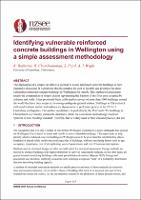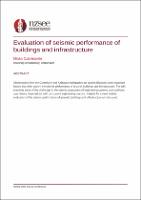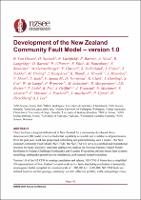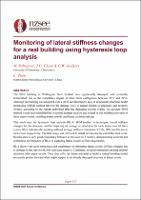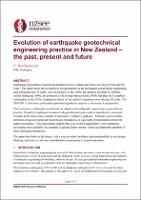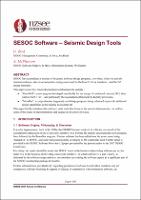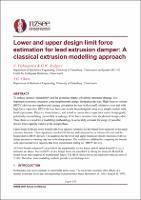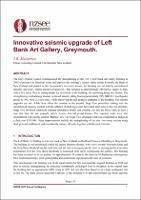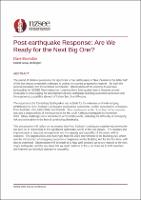Search
Now showing items 1-10 of 115
Identifying vulnerable reinforced concrete buildings in Wellington using a simple assessment methodology
(New Zealand Society for Earthquake Engineering, 2021-04-14)
The application of a simple yet effective method to assess reinforced concrete buildings in New Zealand is discussed. It is proposed that this method be used to identify and prioritise the most vulnerable reinforced concrete ...
Evaluation of seismic performance of buildings and infrastructure
(New Zealand Society for Earthquake Engineering, 2021-04-14)
Observations from the Canterbury and Kaikoura earthquakes are used to illustrate some important factors that often govern the seismic performance of ground, buildings and infrastructure. The talk examines some of the ...
Development of the New Zealand Community Fault Model – version 1.0
(New Zealand Society for Earthquake Engineering, 2021-04-14)
There has been a long-identified need in New Zealand for a community-developed three-dimensional fault model that is accessible and available to all. Over the past year, work has progressed on building and parameterising ...
Monitoring of lateral stiffness changes for a real building using hysteresis loop analysis
(New Zealand Society for Earthquake Engineering, 2021-04-14)
The BNZ building in Wellington, New Zealand was significantly damaged, and eventually demolished, due to the cumulative impact of three main earthquakes between 2013 and 2016. Although the building was equipped with a set ...
Impact of Canterbury earthquakes on the evolution of earthquake geotechnical engineering practice
(New Zealand Society for Earthquake Engineering, 2021-04-14)
Earthquake geotechnical engineering practice has evolved in New Zealand during the past 40 years. The 2010-2011 Canterbury earthquakes provided significant impetus to the research and practice.
Early evolution commenced ...
SESOC Software – Seismic Design Tools
(New Zealand Society for Earthquake Engineering, 2021-04-14)
SESOC has accumulated a number of structural software design programs, over time, which we actively maintain/enhance, also on occasion developing a new tool for the benefit of our members – and the NZ design fraternity.
This ...
Upper and lower bound force capacity estimates of lead extrusion damper design force using classical extrusion models
(New Zealand Society for Earthquake Engineering, 2021-04-14)
To reduce seismic vulnerability and the economic impact of seismic structural damage, it is important to protect structures using supplemental energy dissipation devices. High force to volume (HF2V) devices are supplemental ...
Innovative seismic upgrade of Left Bank Art Gallery, Greymouth.
(New Zealand Society for Earthquake Engineering, 2021-04-14)
The Grey District Council commissioned the strengthening of the C1910 Left Bank Art Galley building in 2018 to preserve its historical value and improve the building’s seismic safety rating. Formally the Bank of New Zealand ...
Post-earthquake Response: Are We Ready for the Next Big One?
(New Zealand Society for Earthquake Engineering, 2021-04-14)
The period of relative quiescence for significant urban earthquakes in New Zealand in the latter half of the last century presented challenges in getting the country prepared to respond – for both the general population ...
Self-drilling dowel connections for ductile link beams in coupled CLT walls
(New Zealand Society for Earthquake Engineering, 2021-04-14)
Coupled CLT walls with steel link beams can form a more efficient lateral load resisting system for tall timber buildings when compared to single CLT shear walls. To achieve adequate coupling between CLT walls and ensure ...

